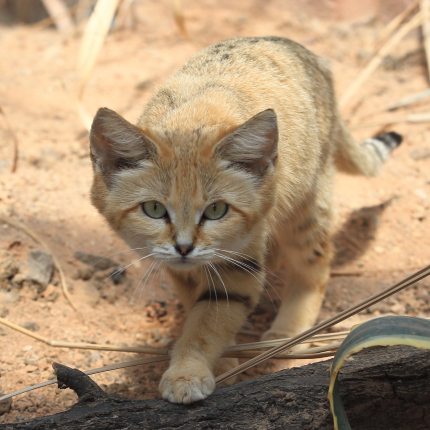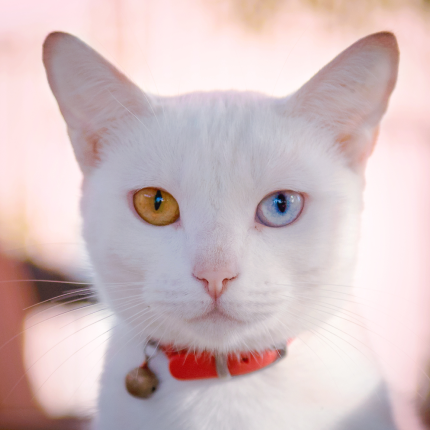The Sand Cat: Nature’s Desert Survivor

In the harsh and arid landscapes of the world’s deserts, a small yet incredibly resourceful feline thrives – the sand cat (Felis margarita). This adorable creature has adapted exceptionally well to its challenging environment, showing nature’s capacity for resilience and survival.
Masters of Concealment
Sporting a coat that ranges from pale yellow to light gray, the sand cat expertly blends into the desert’s sandy backdrop. This camouflage is further enhanced by darker facial and back markings, effectively breaking up its outline. Such an ability to disappear into the surroundings proves crucial for survival in the desert, where visibility is often limited.
Nocturnal Predators
Unlike our domestic crepuscular kitties, the sand cat is entirely nocturnal. With very little light to help them navigate their hunt, they rely on their acute senses of hearing and sight to locate prey like small rodents, lizards, and insects. To detect prey, sand cats skulk close to the ground and use their enhanced sense of hearing. In response to the sounds of a potential meal burrowing beneath the ground, sand cats dig rapidly to expose and capture the prey. Once captured, they may cover the kill and return later to eat it.
Extreme Temperature Survival
Adaptations to cope with the desert’s extreme temperature fluctuations are impressive, to say the least. When the sun blazes during the day, it retreats to its burrow, insulated from the scorching heat. As night descends and temperatures drop, the sand cat reemerges, its fur acting as a natural insulator. Moreover, the sand cat’s kidneys are extraordinarily efficient at conserving water, allowing them to go weeks without drinking any water.
A Species Under Threat
Unfortunately, the future of the sand cat is uncertain. Habitat loss due to human encroachment, development, and competition from other predators has exerted immense pressure on sand cat populations. Overhunting and disease outbreaks have further intensified the threat, leading to the sand cat being classified as “Near Threatened” by the International Union for Conservation of Nature (IUCN).
Conservation
Nevertheless, conservationists are rallying to safeguard the sand cat and its habitat. Their initiatives include creating protected areas, educational campaigns within local communities to stress the significance of sand cat preservation, and measures to mitigate human-wildlife conflicts. Additionally, captive breeding programs are working to bolster sand cat populations.
The sand cat is a captivating and tenacious creature that plays a pivotal role in the desert’s intricate ecosystem. Beyond its physical adaptations, it represents a testament to the marvels of evolution in adversity. Its role as a predator controlling rodent populations is crucial for maintaining the ecological balance of the desert. By comprehending its unique adaptations and acknowledging the challenges it confronts, we can contribute to ensuring its survival for generations to come.

Featured Articles

The Odd-Eyed Cat (AKA Heterochromia)
Cats are already beautiful and fascinating creatures, but people are bound to take notice when they have something as captivating as two different colored eyes. Odd-eyed cats always have one blue eye paired with either a green, yellow, or brown eye. This form of heterochromia occurs in other animals, including…

Polydactyl Cats: Just More Beans to Love
Polydactyl cats have become extremely popular in recent times. As a result, more and more people are interested in learning more about this six-toed cat and want to get one of their own. If you are a cat lover intrigued by polydactyl cats, you have come to the right place….

Why Do Cats Roll Over Into Their Backs But Not Let You Touch Their Bellies?
It’s common knowledge dogs love to have their tummies rubbed when they freely lay down before you and roll onto their backs. But, if you’re also familiar with cats, you know that when they roll onto their backs with their bellies exposed, rubbing the belly will most likely result in…
